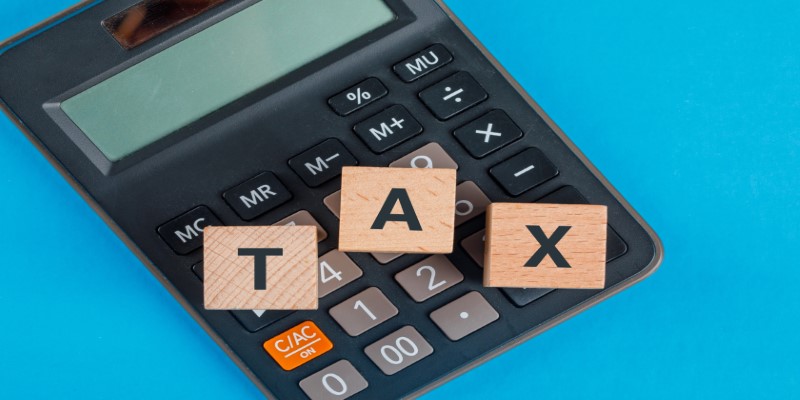Understanding Unsecured Creditors: Types, Differences, and Insights on Secured Creditors
Dec 03, 2024 By Triston Martin
The difference between lending and borrowing with regard to unsecured and secured creditors is important to understand. Creditors (of any kind) do business to provide financial resources to those who borrow, expecting the borrower to repay the debt within a certain period of time. However, the type of creditor secured or unsecured has a vast impact on the rights, obligations, and financial security of the lending party. A position is notably different for unsecured creditors than secured creditors, with large implications in the case of nonpayment or bankruptcy.

Naturally, as that is unsecured, there is a higher risk involved with the loans provided by unsecured creditors based on their trust in the borrower's ability to repay. However, they are used in the financial landscape, and credit access for people and companies is important. In this article, we look at the concept of unsecured creditors, what it means, different types of unsecured creditors, and how they are different from secured creditors in financial agreements.
What is an Unsecured Creditor?
An unsecured creditor is a party that offers credit or loaned money to its borrower without the requirements of security. Basically, the only source of repayment of the debt for these creditors is the borrower's creditworthiness. Unsecured creditors don't have such an option as secured creditors, who have legal claims to specific assets (such as property or equipment) if the borrower defaults.

In other words, in the case of a borrower's bankruptcy, the unsecured creditors will not find it routine to recover the amount owed. However, their claims often lie below those of secured creditors in the order of payment, and they enjoy greater risk in return for the potential of greater interest rates or return.
These creditors are unsecured creditors, which include credit card issuing institutions and individuals, personal loans, medical bills, utility bills, and so on. These creditors, of course, do not have anything to back the loan, but if the borrower defaults, they may avail themselves of legal means of collection, such as court judgments or wage garnishment.
Types of Unsecured Creditors
Understanding the various forms of unsecured creditors provides insight into the broader financial system and the types of obligations they represent. Unsecured creditors span multiple sectors and account for a large portion of consumer and business debt.

Credit Card Issuers
Credit card companies are one of the most common types of unsecured creditors. When a bank or financial institution issues a credit card, it essentially offers a line of credit without any collateral. Users can borrow up to a set limit, and the interest rates tend to be higher due to the lack of security. If a cardholder defaults, the issuer cannot immediately claim any property but may pursue legal action or engage with collection agencies to recover the debt.
Personal Loan Providers
Personal loans, another form of unsecured credit, are generally offered based on the borrowers credit history and income. Banks and credit unions often provide these loans for various purposes, from debt consolidation to unexpected expenses. Due to the unsecured nature of these loans, lenders tend to charge higher interest rates to mitigate the risk of borrower default. While personal loans are typically easier to obtain than secured loans, the repayment terms may be stricter to ensure timely recovery.
Medical and Utility Service Providers
Medical bills, utility charges, and certain subscription-based services often represent unsecured debts. Hospitals, clinics, and utility providers extend services expecting payment after the fact. If a patient or customer cannot pay, these creditors may experience a loss but often have minimal recourse to recover funds. In such cases, some institutions may employ collection agencies or seek small claims court judgments to attempt recovery.
Unsecured vs. Secured Creditors: Key Differences
The main distinction between unsecured and secured creditors lies in the presence or absence of collateral backing the loan. While both types of creditors share the goal of receiving repayment, the mechanisms, protections, and priorities associated with each are notably different.
Risk and Collateral
Secured creditors require borrowers to pledge collateral, which could be real estate, vehicles, or other valuable assets. This security reduces their financial risk because, in cases of default, they can claim or sell the collateral to cover losses. For instance, a mortgage lender is a secured creditor because the property acts as collateral. If the homeowner defaults, the lender can foreclose on the property to recover the outstanding debt. Unsecured creditors, lacking this backup, face a greater risk of non-recovery, which is why they often charge higher interest rates to compensate.
Priority in Bankruptcy
In bankruptcy proceedings, secured creditors enjoy a distinct advantage over unsecured creditors. Bankruptcy law generally prioritizes secured creditors because they have a tangible claim on specific assets. If the borrower goes bankrupt, the secured creditor can seize the pledged asset, leaving any remaining unsecured creditors to divide whatever assets remain. Consequently, unsecured creditors are often last in line and may receive only a fraction, if any, of their original loan amount.
Interest Rates and Accessibility
To offset the additional risk, unsecured loans usually come with higher interest rates. Credit cards, personal loans, and similar unsecured debts have rates that reflect this risk factor. Secured creditors, on the other hand, tend to offer lower interest rates because the collateral provides security, making the loan less risky. Additionally, secured loans are typically accessible only to borrowers with specific assets to pledge, while unsecured credit may be available to a broader range of individuals and businesses.
Legal Remedies
In cases of nonpayment, unsecured creditors have fewer options for immediate recovery. While they may take legal steps, such as suing the borrower or obtaining wage garnishments, these actions are costly and time-consuming. Secured creditors can bypass much of this process by liquidating the collateral. This difference makes secured credit more attractive to lenders looking for efficient ways to minimize potential losses.
Conclusion
Unsecured creditors fill a crucial role in the lending landscape, extending financial opportunities to borrowers without the hurdle of asset-based requirements. Although they bear higher risk compared to secured creditors, their role is indispensable in promoting financial accessibility and consumer liquidity. Unsecured creditorsranging from credit card companies to service providersdemonstrate how lending can occur based on trust and creditworthiness rather than tangible collateral.








